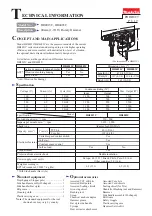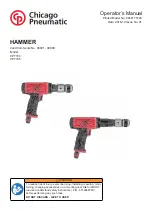
7
ENGLISH
(Original instructions)
Charging the battery (fig. A, B)
The battery needs to be charged before first use and
whenever it fails to produce sufficient power on jobs that were
easily done before. The battery may become warm while
charging; this is normal and does not indicate a problem.
Warning!
Do not charge the battery at ambient temperatures
below 10 °C or above 40 °C. Recommended charging
temperature: approx. 24 °C.
Note:
The charger will not charge a battery if the cell
temperature is below approximately 10 °C or above 40 °C.
The battery should be left in the charger and the charger will
begin to charge automatically when the cell
temperature
warms up or cools down.
u
To charge the battery, insert the Battery (8) into the desk
charger (9) or the cup charger (11) depending on your
model. The battery will only fit into the charger one way.
u
Plug the desk charger (9) or the cup charger (11) into a
suitable power source and switch on.
u
Charge discharged batteries within 1 week. Battery life will
be greatly diminished if stored in a discharged state.
Fitting and removing the battery (fig. C, D)
u
To fit the battery, line it up with the receptacle on the tool.
Slide the battery into the receptacle and push until the
battery snaps into place.
u
To remove the battery, push the release button (8a) and
remove the battery from the receptacle.
Fitting the side handle and depth stop (fig. E)
u
Turn the grip clockwise until you can slide the side handle
(6) onto the front of the tool as shown.
u
Rotate the side handle into the desired position.
u
Insert the depth stop (4) into the mounting hole as shown.
u
Set the depth stop to the desired position. The maximum
drilling depth is equal to the distance between the tip of
the drill bit and the front end of the depth stop.
u
Ensure handle detents (23) are locked onto the ribs on the
housing (22).
u
Tighten the side handle by turning the grip
counterclockwise.
Fitting an accessory (fig. F - G)
u
Clean and grease the shank (12) of the accessory.
u
Insert the shank into the tool holder (5).
u
Push the accessory down and turn it slightly until it fits into
the slots.
u
Pull on the accessory to check if it is properly locked.
The hammering function requires the accessory to be able
to move axially several centimetres when locked in the
tool holder.
u
To remove the accessory, pull back the sleeve (13) and
pull out the accessory.
Keyed chuck (fig. H)
u
Open the chuck by turning the sleeve (14) anti-clockwise.
u
Insert the bit shaft (16) into the chuck.
u
Insert the chuck key (17) into the hole (15) in the side of
the chuck and turn clockwise until tight.
Warning!
Before drilling into walls, floors or ceilings, check for
the location of wiring and pipes.
Warning!
Do not apply chisels when the tool is in the drilling
mode.
Forward/reverse action (fig. I)
u
Move the selector (2) to indicate the direction you require.
Switching on and off (fig. I)
u
To switch the tool on, press the variable speed switch (1).
The tool speed depends on how far you press the switch.
u
As a general rule, use low speeds for large diameter drill
bits and high speeds for smaller diameter drill bits.
u
To switch the tool off, release the variable speed switch.
Selecting the operating mode (fig. J)
The tool can be used in three operating modes.
u
To operate the operating mode selector (3), push the
unlock button (20) and rotate the selector towards the
required position, as indicated by the symbols.
Drilling
u
For drilling in steel, wood and plastics, and for
screwdriving set the operating mode selector (3) to the
position (19).
Hammer drilling
u
For hammer drilling in masonry and concrete, set the
operating mode selector (3) to the
position (18).
When hammering, the tool should not bounce and run
smoothly. If necessary, increase the speed.
Hammering
u
For hammering with spindle lock, and for light chiselling
and chipping, set the operating mode selector (3) to the
position (21).
u
When changing from hammer drilling to chiselling, turn the
chisel to the desired position. If resistance is felt during
mode change, slightly turn the chisel to engage the
spindle lock.
Accessories
The performance of your tool depends on the accessory used.
Stanley BLACK+DECKER accessories are engineered to high
quality standards and designed to enhance the performance
of your tool. By using these accessories you will get the very
best from your tool.





























